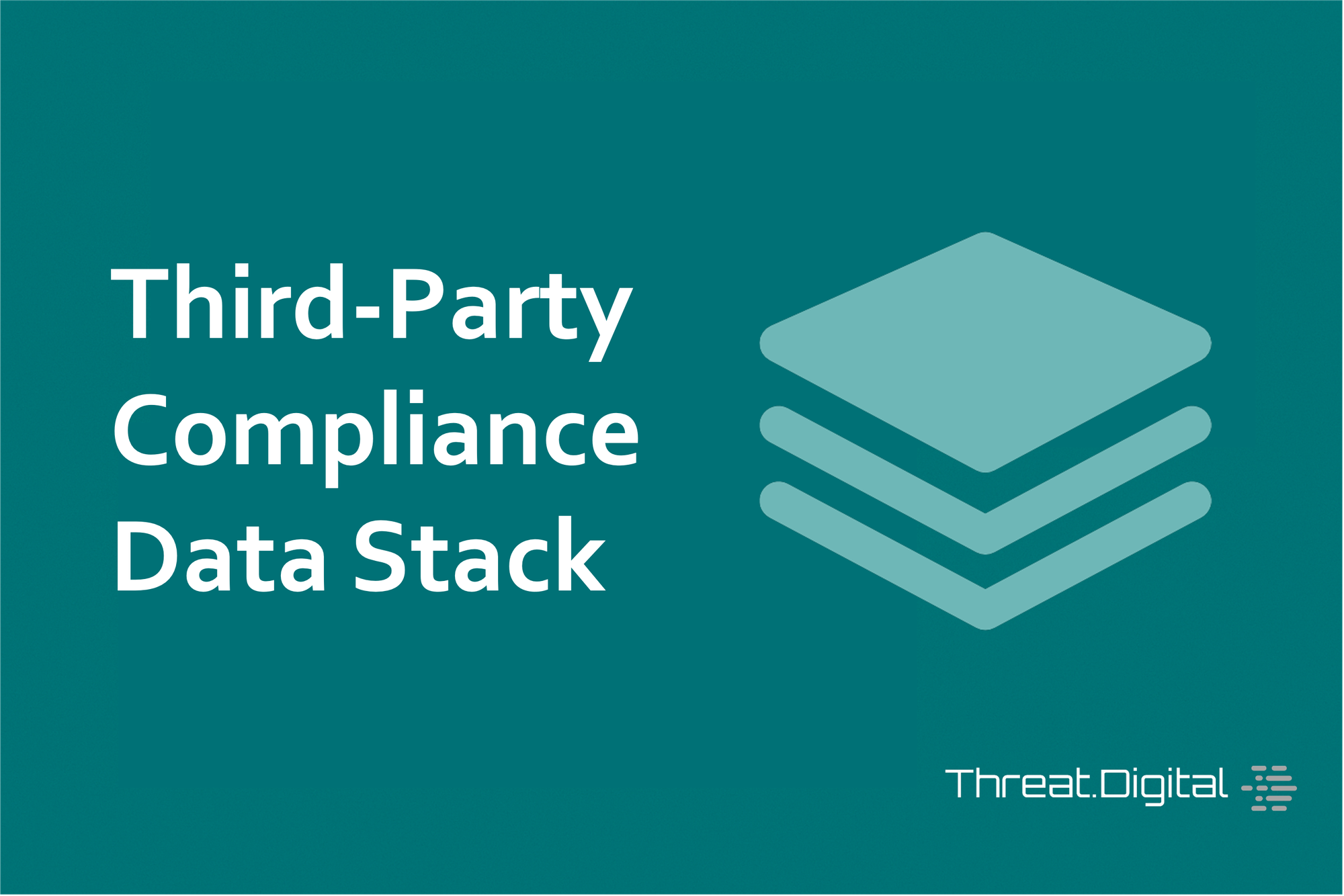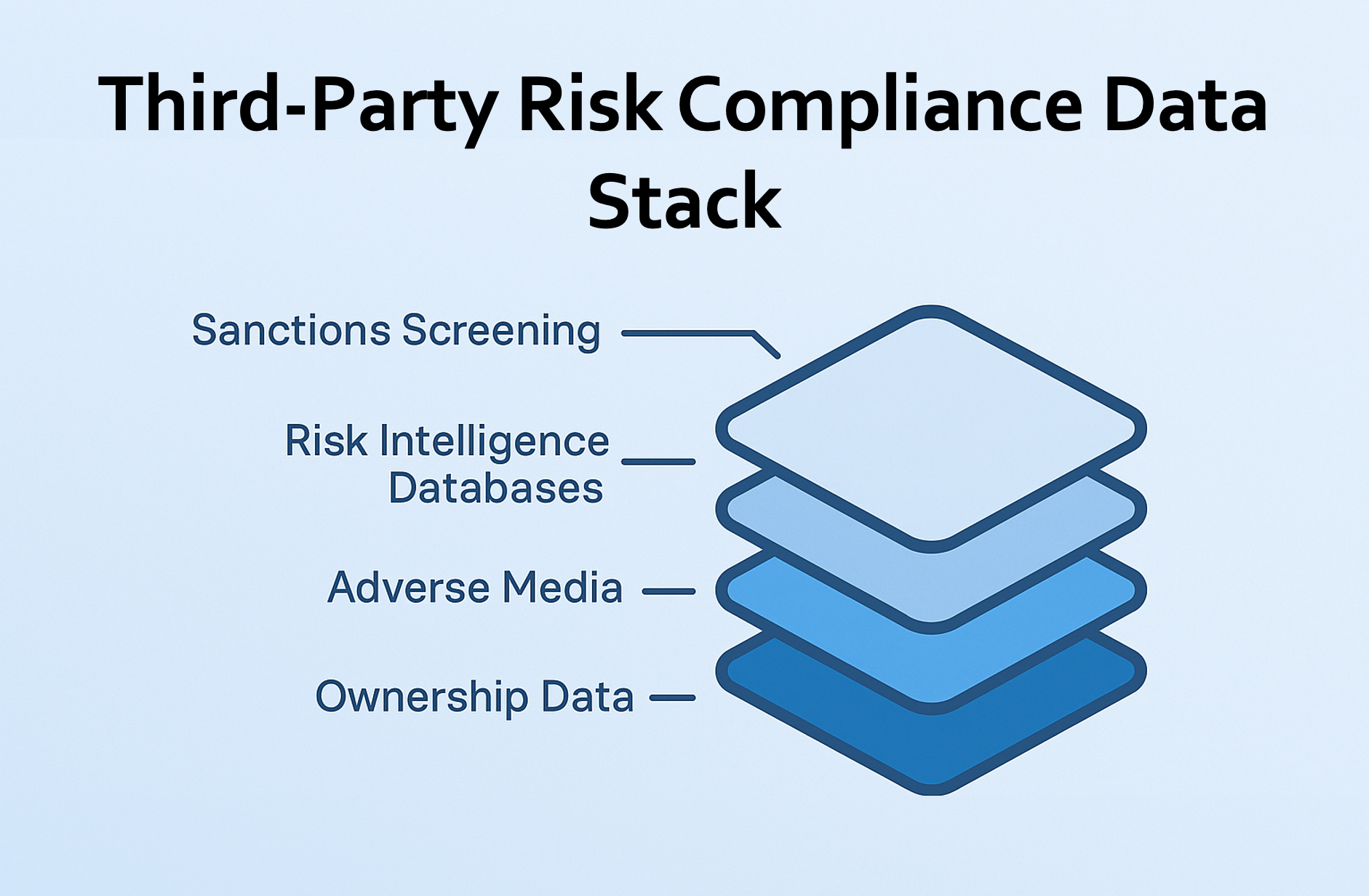Inside the Risk Data Strategy of Top Third-Party Compliance Programs
A breakdown of the data types that power modern third-party risk programs in 2025

At Threat.Digital, we have the unique advantage of working with both sides of the third-party risk ecosystem. On one side, we partner with platforms building some of the most innovative third-party risk management (TPRM) solutions. On the other, we provide data services to companies running the most mature risk programs in the industry.
This gives us a front-row seat to what actually works in practice. We see how leading teams think about data, where they invest, and how they build flexible, future-ready strategies.
Below is a look at how organizations are structuring their risk intelligence data stack in 2025. Each data type plays a distinct role. They don’t sit on top of each other like steps, but work together to create a comprehensive view of risk.
Sanctions and Risk Intelligence: The Foundation for Structured List Screening
Sanctions data is where most companies begin. It is a regulatory requirement and essential for identifying individuals and entities that are subject to global restrictions, such as those from OFAC, the UN, and the EU.
Many organizations start with a standalone sanctions screening solution. However, a large number, especially those with more developed compliance needs, go straight to using a risk intelligence database and integrating it into a TPRM platform. These databases include sanctions data, but also provide a broader view of potential third-party risks.
In addition to sanctioned parties, these databases often cover:
- Politically Exposed Persons (PEPs)
- State-Owned Enterprises (SOEs)
- A curated subset of adverse media
These structured databases help teams move beyond basic screening to additional risk assessment. The adverse media in these tools is typically human-curated, which makes it consistent and reliable, but limited in scale. Events that are speculative, reputational, or early in development are often excluded.
Still, for many companies, a risk intelligence database is the cornerstone of their due diligence workflow. Whether paired with a dedicated sanctions screening solution or not, it remains the most common base layer in mature TPRM stacks.
Adverse Media Monitoring: Capturing What Structured Data Misses
As programs evolve, compliance teams quickly recognize the limits of curated data. The reality is that risk signals often show up in the media before they are captured in databases.
To close that gap, companies turn to adverse media monitoring tools that pull from unstructured content across the web, including global news, blogs, local media, and industry publications.
Historically, these tools created more work than they solved. Alerts were high in volume and low in precision. But this has changed. The best providers now use AI and large language models to classify and prioritize relevant content, reducing false positives and surfacing meaningful risk events in real time.
This approach allows companies to stay ahead of emerging risks like fraud, corruption, regulatory actions, or CSR/ESG related controversies without overwhelming their teams. For mature programs, it is no longer optional.
Ownership Data: Seeing Who Is Really Behind the Entity
The final piece in a complete risk view is ownership and beneficial ownership data. Screening the named entity is just part of the picture. Regulations like OFAC’s 50 Percent Rule require companies to know who controls that entity and whether those individuals pose a risk.
Ownership data helps uncover:
- Corporate hierarchies
- Shareholding structures
- Ultimate beneficial owners (UBOs)
Once these individuals or entities are identified, they are screened using the same stack, including sanctions, risk databases, and adverse media, to ensure full coverage.
Ownership data is often sourced from corporate registries or enriched by specialist providers.

A Risk Data Ecosystem, Not a Maturity Ladder
It’s common to think of TPRM data as a ladder where you start with sanctions and climb your way to ownership. But in reality, these sources work best when combined.
- Sanctions and risk databases provide list data coverage for basic compliance risks
- Adverse media fills in the gaps with more context and real-time intelligence
- Ownership data connects entities to the people behind them for additional coverage
Together, they provide the full picture. Effective compliance programs don’t rely on one source. They create a system where different types of data reinforce each other.
